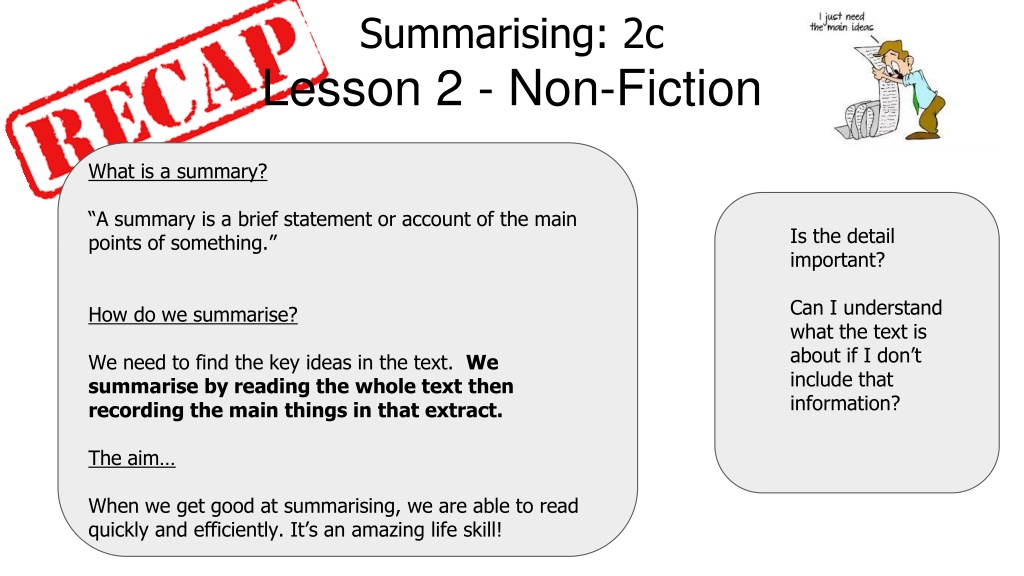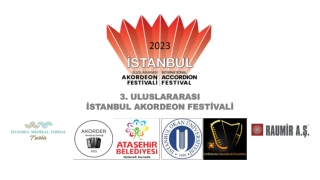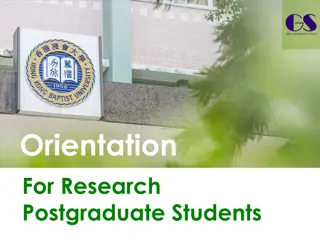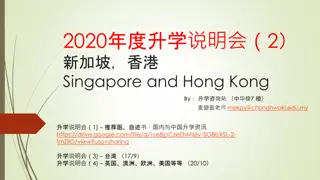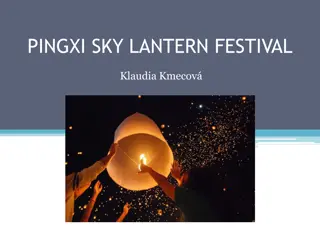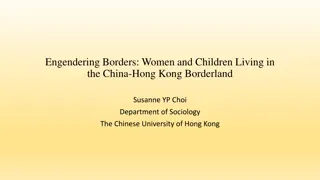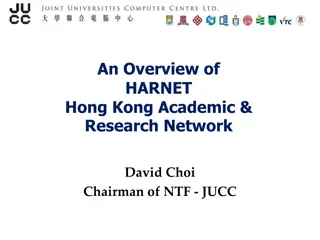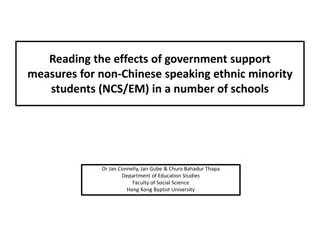Celebrating the Cheung Chau Bun Festival in Hong Kong
The Cheung Chau Bun Festival in Hong Kong is a vibrant celebration held annually in spring. This festival features a parade with divine costumes, drummers, and traditional dances, culminating in the exciting Bun Scrambling Competition at midnight. The festival, known for its red-stamped peace buns and symbolic traditions, attracts thousands of visitors to the tiny island of Cheung Chau. Despite modern safety regulations, the festival maintains its cultural significance and festive spirit, making it a must-see event in Hong Kong.
Download Presentation

Please find below an Image/Link to download the presentation.
The content on the website is provided AS IS for your information and personal use only. It may not be sold, licensed, or shared on other websites without obtaining consent from the author.If you encounter any issues during the download, it is possible that the publisher has removed the file from their server.
You are allowed to download the files provided on this website for personal or commercial use, subject to the condition that they are used lawfully. All files are the property of their respective owners.
The content on the website is provided AS IS for your information and personal use only. It may not be sold, licensed, or shared on other websites without obtaining consent from the author.
E N D
Presentation Transcript
Summarising: 2c Lesson 2 - Non-Fiction What is a summary? A summary is a brief statement or account of the main points of something. Is the detail important? Can I understand what the text is about if I don t include that information? How do we summarise? We need to find the key ideas in the text. We summarise by reading the whole text then recording the main things in that extract. The aim When we get good at summarising, we are able to read quickly and efficiently. It s an amazing life skill!
Summarise In the last lesson, we looked at summarising in fiction. As a quick warm up, see if you can summarise the story of Goldilocks and the Three Bears in 4 short sentences Is the detail important? Can I understand what the text is about if I don t include that information? Today, we are going to look at summarising in non- fiction. The skill is exactly the same - we read the whole text quickly first then identify the key information.
Summarise The region of Hong Kong, in East Asia, is made up of hundreds of islands, some very small and some quite large. One of those islands is named Cheung Chau, a tiny territory shaped like a dumbbell. Less than an hour away from Hong Kong s main island by ferry boat, Cheung Chau is famous for the festival it throws every year in spring, usually in April or May. The festival lasts for about a week and is called the Cheung Chau Bun Festival. It is named after the steamed buns small, round pastries filled with sweet paste that are eaten on this holiday. Though Cheung Chau is usually a quiet fishing village, hundreds of thousands of people visit during festival time. They come to celebrate and to eat the island s famous buns, which are all stamped in red with the Chinese character that means peace. As part of the celebration, the people who live on the island organize a giant parade. The excited crowd leaves from Cheung Chau s big temple, called the Pak Tai Temple, and winds its way around town. Children dress up like divine and legendary Chinese characters and sit at the top of long poles that are paraded through the streets, like living floats. There are also drummers, opera singers, and dancers dressed as dragons and lions. Is the detail important? Can I understand what the text is about if I don t include that information? For a few days before the parade, the residents of Cheung Chau only eat vegetarian food, but afterward, it is tradition to eat meat. Once the procession is over, the island s butchers reopen their doors, and there is a great feast. The real highlight of the festival, however, happens at the stroke of midnight. It s the Bun Scrambling Competition. Several huge towers are built in the center of the island and are covered with plastic buns. Contestants climb up the towers as fast as possible and throw as many buns as they can over their shoulders and into the open knapsacks they carry on their backs. What are the most important things? This is one of the biggest traditional celebrations in Hong Kong, says Mason Hung, a Hong Kong Tourism Board senior manager. It has been so well preserved. The contest was put on hold from 1978 to 2005, because one of the towers fell down. Now there are new rules: the structures need to be made of steel instead of bamboo. And instead of being open to everyone, only twelve carefully chosen participants can join in. First, though, they are trained in the basics of safe climbing. What would be a good title for this? Luckily for everyone else present, tasty buns are given out at the end of the competition, and the boat back to Hong Kong s main island runs all night long.
Summarise The region of Hong Kong, in East Asia, is made up of hundreds of islands, some very small and some quite large. One of those islands is named Cheung Chau, a tiny territory shaped like a dumbbell. Less than an hour away from Hong Kong s main island by ferry boat, Cheung Chau is famous for the festival it throws every year in spring, usually in April or May. The festival lasts for about a week and is called the Cheung Chau Bun Festival. It is named after the steamed buns small, round pastries filled with sweet paste that are eaten on this holiday. Though Cheung Chau is usually a quiet fishing village, hundreds of thousands of people visit during festival time. They come to celebrate and to eat the island s famous buns, which are all stamped in red with the Chinese character that means peace. As part of the celebration, the people who live on the island organise a giant parade. The excited crowd leaves from Cheung Chau s big temple, called the Pak Tai Temple, and winds its way around town. Children dress up like divine and legendary Chinese characters and sit at the top of long poles that are paraded through the streets, like living floats. There are also drummers, opera singers, and dancers dressed as dragons and lions. Is the detail important? Can I understand what the text is about if I don t include that information? For a few days before the parade, the residents of Cheung Chau only eat vegetarian food, but afterward, it is tradition to eat meat. Once the procession is over, the island s butchers reopen their doors, and there is a great feast. The real highlight of the festival, however, happens at the stroke of midnight. It s the Bun Scrambling Competition. Several huge towers are built in the center of the island and are covered with plastic buns. Contestants climb up the towers as fast as possible and throw as many buns as they can over their shoulders and into the open knapsacks they carry on their backs. What are the most important things? This is one of the biggest traditional celebrations in Hong Kong, says Mason Hung, a Hong Kong Tourism Board senior manager. It has been so well preserved. The contest was put on hold from 1978 to 2005, because one of the towers fell down. Now there are new rules: the structures need to be made of steel instead of bamboo. And instead of being open to everyone, only twelve carefully chosen participants can join in. First, though, they are trained in the basics of safe climbing. What would be a good title for this? Luckily for everyone else present, tasty buns are given out at the end of the competition, and the boat back to Hong Kong s main island runs all night long.
Summarise Less than an hour away from Hong Kong Cheung Chau is famous for the festival it throws every year in spring, The Cheung Chau Bun Festival. small, round pastries filled with sweet paste organise a giant parade Children dress up like divine and legendary Chinese characters and sit at the top of long poles that are paraded through the streets, like living floats. There are also drummers, opera singers, and dancers dressed as dragons and lions. Is the detail important? Can I understand what the text is about if I don t include that information? Midnight Bun Scrambling Competition. Several huge towers are built in the center of the island and are covered with plastic buns. Contestants climb up the towers as fast as possible and throw as many buns as they can over their shoulders and into the open knapsacks they carry on their backs one of the biggest traditional celebrations in Hong Kong, Notice here that I m taking information from different parts of the text for my summary What are the most important things? The Cheung Chau Bun Festival is one of the biggest traditional festivals in Hong Kong - it takes place less than an hour from Hong Kong and happens every year in early Spring. Buns are small, round pastries filled with sweet paste There is a giant parade that involves children dressing up as legendary Chinese characters as well as drummers, opera singers and dancers dressed as dragons and lions. At midnight there is the Bun Scrambling Competition where contestants climb towers to collect as many buns as possible. What would be a good title for this? A suitable title would be: Hong Kong s Brilliant Bun Festival
You do... Learning check: Bees are flying insects that feed on nectar and pollen. They are usually yellow and black and covered in fuzzy hair that makes collecting pollen easier. A bee s body is similar to that of other insects for instance, an ant with three major sections: the head, the middle section called the thorax, and the last section called the abdomen. The head of a bee has five eyes for seeing and two antennae for touching and smelling. Two sets of wings and three sets of legs can be found on a bee s thorax. Depending on the type of bee, the last set of legs might have little sacs that store the pollen that the bee has collected from flowers. Many types of bees have stingers. The bee stinger is the most feared part of a bee, and for good reason. Filled with poison, the stinger is a bee s protection from danger. The stingers are around 12 millimeters long. There are over 20,000 known bee species in the world. The best known is probably the honeybee. Honeybees live in beehives, which have a distinct order that helps things run smoothly. At the bottom of the totem pole are the workers. Workers are young female bees. Some of their main duties include going out to find food (nectar and pollen), building the hive, and keeping it clean. Honeybees will travel up to eight miles if necessary to find nectar and pollen to bring back to the hive. Worker bees are actually the only bees that ever do any stinging. When this does happen, it is usually because they are trying to protect their hive from harm. A bee rarely stings when it is away from the hive, but it might sting if it senses danger. The lifespan of a worker bee is anywhere from 4 to 9 months. The queen honeybee is the biggest bee in the hive. There is usually only one per hive, and her job is to grow the family by laying eggs that will become the next generation of honeybees. She lays over a thousand eggs per day and can live anywhere from 3 to 5 years. When the time comes for a new queen to take over, some larvae are placed in special chambers to grow queen bees. These larvae are fattened up with royal jelly, a nutritious substance that worker bees secrete. It usually takes about two weeks for a female larva to grow into a queen bee. The first female bee to become a queen bee kills the other potential queen bees. Male honeybees are called drones. They don t have stingers, and they don t collect nectar or pollen. Their only purpose is to mate with the queen. Several hundred drones can live in a hive at one time. As the winter months approach, the males are kicked out of the hive in order to make it easier for the queen and her workers to survive. Food needs to be saved as there are fewer flowers to collect pollen and nectar from. Less food means the drones are the first ones to go! Summarise this text in 4 bullets points and give the text a suitable title. Click on the next slide for your teacher s answer...
Learning check: You do... Bees are flying insects that feed on nectar and pollen. They are usually yellow and black and covered in fuzzy hair that makes collecting pollen easier Many types of bees have stingers. There are over 20,000 known bee species in the world. The best known is probably the honeybee. Honeybees live in beehives, which have a distinct order that helps things run smoothly. At the bottom of the totem pole are the workers. Workers are young female bees. Some of their main duties include going out to find food (nectar and pollen), building the hive, and keeping it clean The queen honeybee is the biggest bee in the hive...She lays over a thousand eggs per day and can live anywhere from 3 to 5 years Male honeybees are called drones. They don t have stingers, and they don t collect nectar or pollen. Their only purpose is to mate with the queen. As the winter months approach, the males are kicked out of the hive in order to make it easier for the queen and her workers to survive Bees, which are normally yellow and black and covered in fuzzy hair, feed on nectar and pollen. There are 20,000 species of bees many of which have stingers and the best known is the honey bee There are 3 types of honeybee: workers that are young females and collect pollen, drone that are male and only mate with the queen and the queen honeybee which lays eggs. Honeybees live between a few months and up to 5 years and when the weather is could the drone bees are kicked out of the hive ro save the other bees. A suitable title would be The Life of a Honeybee
Learning check: You do... Everything around us is made of matter your clothes, the trees, even the water you drink! We divide matter into four major categories, which are called the four states of matter: liquid, gaseous, solid, and plasma. However, we will focus on the first three. Whatever the state of matter may be, all matter is made of tiny particles called atoms. These particles are too tiny to see with the naked eye; they re even too small to see with a regular microscope. If you line up a million atoms next to each other, they will be as thick as a single piece of human hair. So, we can only look at atoms through very powerful tools, one of them being the scanning tunneling microscope. How Do We Know? We can easily see liquids and solids around us, but most gases aren t visible. We can t see the air around us, but it is still made of atoms that constantly move around freely in space. How can we tell? Is the detail important? Can I understand what the text is about if I don t include that information? Take a balloon, for example. When we pump air into a balloon, it visibly inflates. That means that gaseous matter is filling the balloon and taking up space. The more air we blow into the balloon, the bigger it gets. Therefore, we can observe the way gas moves around space. In the same way, inflatable pool toys also fill with air so that they can float on water. When we fill the plastic shells with air, the toys take shape. Since air is lighter than water, the pool toys can rest on the water without sinking. And then we can enjoy a sunny day while floating in a pool! What are the most important things? What would be a good title for this?
Learning check: You do... Moving Atoms Atoms are constantly moving. However, atoms move at different speeds within different states of matter. Atoms move more slowly when they are more densely packed. Atoms in solids are usually tightly packed and have less space to move around freely. This means that atoms in most solids move more slowly than atoms in most liquids.The atoms in gas usually move the fastest. Since the atoms usually move more freely in liquids and gases, they can undergo a process called diffusion. (Solids can diffuse as well, although it s a much longer process.) Diffusion is the movement of particles from a higher concentration to a lower concentration. That s why, when you spray perfume in a corner of a room, you will eventually smell it on the other side of the room. The atoms from the perfume diffuse through the air. Because of this diffusion, the perfume scent is spread. Is the detail important? Identification We can identify materials according to a variety of properties. Scientists have determined several different measurements to help label materials. Some examples are temperature, hardness, color and length. Usually, these are used to measure solids, like rocks and minerals. However, temperature can be used to measure liquids as well. When geologists study rocks, they often use the Mohs scale of mineral hardness. This scale allows us to characterize the scratch resistance of various minerals. A diamond is described as hard because it is extremely difficult to scratch. Scientists can measure hardness with the Mohs scale and compare minerals to other minerals. Can I understand what the text is about if I don t include that information? What are the most important things? Scientists always use various methods to group materials together that way, it s easier to study and compare them. That s another reason why we differentiate between liquids, gases, solids and plasmas! Summarise this text in 4 bullets points and give the text a suitable title. What would be a good title for this?
Well done! Now send your answers to your teacher.
